See Page 1 |
2 |
3 |
4 of the December 2022 homepage
archives. Wednesday the 7th
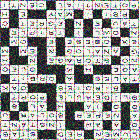 Crossword puzzles appeared fairly regularly
in electronics magazines in the 1960's and 1970's, then for some reason disappeared.
I have been a worker of crossword puzzles on nearly a daily basis for as long as
I can remember throughout my 64 year lifetime. For the past 20 years I have been
making weekly electronics-themed crossword puzzles for RF Cafe visitors. To be honest,
I have no idea how many people work them; maybe I've been wasting my time. This
"Electronic
Crosswords" appeared in the November 1962 issue of Electronics World magazine.
A list of all the other crosswords from vintage magazines is located at the bottom
of the page. Enjoy! Crossword puzzles appeared fairly regularly
in electronics magazines in the 1960's and 1970's, then for some reason disappeared.
I have been a worker of crossword puzzles on nearly a daily basis for as long as
I can remember throughout my 64 year lifetime. For the past 20 years I have been
making weekly electronics-themed crossword puzzles for RF Cafe visitors. To be honest,
I have no idea how many people work them; maybe I've been wasting my time. This
"Electronic
Crosswords" appeared in the November 1962 issue of Electronics World magazine.
A list of all the other crosswords from vintage magazines is located at the bottom
of the page. Enjoy!
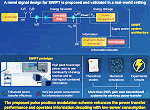 "Simultaneous
wireless information and power transfer (SWIPT) is a promising technology to
connect and energize low-power devices wirelessly over a long distance, suiting
it for IoT implementations. But today's state-of-the-art low-power SWIPT receivers
still consume much more energy for communication than the amount they can harvest,
which hinders further development and growth of the IoT ecosystem. In a potential
game changer, scientists at the Korea Maritime and Ocean University developed an
innovative signal design for a simultaneous wireless information and power transfer
system. The proposed pulse-position modulation (PPM) scheme enhances power-transfer
efficiency and reduces data-decoding energy consumption - a double advantage - besides
performing better than conventional systems. The technique may ultimately bolster
IoT technology. Prior work in the SWIPT arena highlights two common receiver architectures
based on time-switching and power-splitting schemes..." "Simultaneous
wireless information and power transfer (SWIPT) is a promising technology to
connect and energize low-power devices wirelessly over a long distance, suiting
it for IoT implementations. But today's state-of-the-art low-power SWIPT receivers
still consume much more energy for communication than the amount they can harvest,
which hinders further development and growth of the IoT ecosystem. In a potential
game changer, scientists at the Korea Maritime and Ocean University developed an
innovative signal design for a simultaneous wireless information and power transfer
system. The proposed pulse-position modulation (PPM) scheme enhances power-transfer
efficiency and reduces data-decoding energy consumption - a double advantage - besides
performing better than conventional systems. The technique may ultimately bolster
IoT technology. Prior work in the SWIPT arena highlights two common receiver architectures
based on time-switching and power-splitting schemes..."
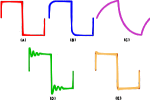 If you work with oscilloscopes on a regular
basis, you know know one of the first things you do (or should do) is to calibrate
the frequency response of the probe by hooking it onto the squarewave port and tweaking
the probe capacitor for no overshooting or undershooting at the waveform edges,
and then verify that the displayed amplitude is correct. I remember being amazed
during engineering courses at learning that any periodic waveform can be described
mathematically as the sum of sinewaves at various frequencies, amplitudes, and phases.
Knowing the theory behind those waveforms - particularly standard ones like squarewaves,
trianglewaves, sawtooths, etc. - really helps in understanding what you see on the
o-scope and in troubleshooting problems. The same goes for interpreting the impulse
and step function responses as influenced by resistance, capacitance, and inductance
effects. Perhaps the most amazing thing I learned about squarewaves is that, based
on the
Gibbs phenomenon, anything short of an infinite series of additive sinewaves
when representing a squarewave results in an overshoot - albeit vanishingly minute
- at the edge. In the real world, complex reactive/resistive effects render the
effect undetectable... If you work with oscilloscopes on a regular
basis, you know know one of the first things you do (or should do) is to calibrate
the frequency response of the probe by hooking it onto the squarewave port and tweaking
the probe capacitor for no overshooting or undershooting at the waveform edges,
and then verify that the displayed amplitude is correct. I remember being amazed
during engineering courses at learning that any periodic waveform can be described
mathematically as the sum of sinewaves at various frequencies, amplitudes, and phases.
Knowing the theory behind those waveforms - particularly standard ones like squarewaves,
trianglewaves, sawtooths, etc. - really helps in understanding what you see on the
o-scope and in troubleshooting problems. The same goes for interpreting the impulse
and step function responses as influenced by resistance, capacitance, and inductance
effects. Perhaps the most amazing thing I learned about squarewaves is that, based
on the
Gibbs phenomenon, anything short of an infinite series of additive sinewaves
when representing a squarewave results in an overshoot - albeit vanishingly minute
- at the edge. In the real world, complex reactive/resistive effects render the
effect undetectable...
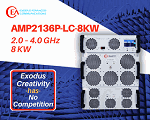 Exodus Advanced Communications is a multinational
RF communication equipment and engineering service company serving both commercial
and government entities and their affiliates worldwide. We are pleased to present
the new Exodus Model AMP2136P-LC-8KW, a pulse amplifier designed for Pulse/HIRF,
EMC/EMI Mil-Std 461/464 and Radar applications. AMP2136P-LC-8KW provides superb
pulse fidelity and up to 100 μsec pulse widths. Duty cycles to 6% with a minimum
69 dB gain. Available monitoring parameters for forward/reflected power in
watts and dBm, VSWR, voltage, current, temperature sensing for outstanding reliability
and ruggedness for compact integrations. Exodus Advanced Communications is a multinational
RF communication equipment and engineering service company serving both commercial
and government entities and their affiliates worldwide. We are pleased to present
the new Exodus Model AMP2136P-LC-8KW, a pulse amplifier designed for Pulse/HIRF,
EMC/EMI Mil-Std 461/464 and Radar applications. AMP2136P-LC-8KW provides superb
pulse fidelity and up to 100 μsec pulse widths. Duty cycles to 6% with a minimum
69 dB gain. Available monitoring parameters for forward/reflected power in
watts and dBm, VSWR, voltage, current, temperature sensing for outstanding reliability
and ruggedness for compact integrations.
 Nobody younger than about 35 years old was
alive when the "Iron Curtain" was still in place. That was where the Communist countries
were able to keep outside information from the rest of the free world from getting
to their oppressed citizens. The Soviet Union, China, North Korea, and other regimes
had a vested interest in keeping people from learning that not everybody lived in
squalor as they did. Maybe you remember the tales of Sears Roebuck and Montgomery
Ward catalogs needing to be secreted into the countries because the Communists feared
their influence. The type of
radio signal jamming mentioned in this 1959 issue of Popular Electronics
magazine was common during the Cold War era. Modern communications has made information
dissemination ubiquitous, even in the still-Communist countries - like Russia, China,
and North Korea... Nobody younger than about 35 years old was
alive when the "Iron Curtain" was still in place. That was where the Communist countries
were able to keep outside information from the rest of the free world from getting
to their oppressed citizens. The Soviet Union, China, North Korea, and other regimes
had a vested interest in keeping people from learning that not everybody lived in
squalor as they did. Maybe you remember the tales of Sears Roebuck and Montgomery
Ward catalogs needing to be secreted into the countries because the Communists feared
their influence. The type of
radio signal jamming mentioned in this 1959 issue of Popular Electronics
magazine was common during the Cold War era. Modern communications has made information
dissemination ubiquitous, even in the still-Communist countries - like Russia, China,
and North Korea...
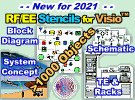 With more than 1000
custom-built stencils, this has got to be the most comprehensive set of
Visio Stencils available for RF, analog, and digital system and schematic
drawings! Every stencil symbol has been built to fit proportionally on the included
A-, B-, and C-size drawing page templates (or use your own page if preferred). Components
are provided for system block diagrams, conceptual drawings, schematics, test equipment,
racks (EIA 19", ETSI 21"), and more. Test equipment and racks are built at a 1:1
scale so that measurements can be made directly using Visio built-in dimensioning
objects. Page templates are provided with a preset scale (changeable) for a good
presentation that can incorporate all provided symbols... With more than 1000
custom-built stencils, this has got to be the most comprehensive set of
Visio Stencils available for RF, analog, and digital system and schematic
drawings! Every stencil symbol has been built to fit proportionally on the included
A-, B-, and C-size drawing page templates (or use your own page if preferred). Components
are provided for system block diagrams, conceptual drawings, schematics, test equipment,
racks (EIA 19", ETSI 21"), and more. Test equipment and racks are built at a 1:1
scale so that measurements can be made directly using Visio built-in dimensioning
objects. Page templates are provided with a preset scale (changeable) for a good
presentation that can incorporate all provided symbols...
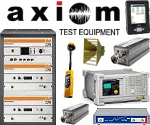 Axiom Test Equipment allows you to
rent or
buy test equipment,
repair
test equipment, or sell or trade test equipment. They are committed to providing
superior customer service and high quality electronic test equipment. Axiom offers
customers several practical, efficient, and cost effective solutions for their projects'
TE needs and is committed to providing superior customer service and high quality
electronic test equipment. For anyone seeking a way to offload surplus or obsolete
equipment, they offer a trade-in program or they will buy the equipment from you.
Some vintage items are available fully calibrated. Please check out Axiom Test Equipment
today - and don't miss the blog articles! Axiom Test Equipment allows you to
rent or
buy test equipment,
repair
test equipment, or sell or trade test equipment. They are committed to providing
superior customer service and high quality electronic test equipment. Axiom offers
customers several practical, efficient, and cost effective solutions for their projects'
TE needs and is committed to providing superior customer service and high quality
electronic test equipment. For anyone seeking a way to offload surplus or obsolete
equipment, they offer a trade-in program or they will buy the equipment from you.
Some vintage items are available fully calibrated. Please check out Axiom Test Equipment
today - and don't miss the blog articles!
Tuesday the 6th
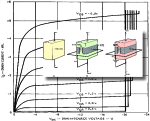 Here is a bit of
history of the field effect transistor's (FET) history presented in a 1965 issue
of Electronics World magazine. Author Gene Jackson mentions how the FET was being
researched in laboratories toward the end of World War II, predating the junction
type transistor developed by Ball Labs, with the first working model announced in
late 1947. A primary difference between the bipolar junction transistor (BJT) and
the junction FET is that the BJT is current-controlled and the FET is voltage-controlled
(like a vacuum tube). The abbreviation JFET is not mentioned in reference to the
junction FET, although MOSFET is used for the metal-oxide-semiconductor FET. Magazine
editor William Stocklin adds a comment about the difference between electron current
flow (negative to positive) and conventional current flow (positive to negative),
which was a relatively new distinction at the time. See the follow-on article... Here is a bit of
history of the field effect transistor's (FET) history presented in a 1965 issue
of Electronics World magazine. Author Gene Jackson mentions how the FET was being
researched in laboratories toward the end of World War II, predating the junction
type transistor developed by Ball Labs, with the first working model announced in
late 1947. A primary difference between the bipolar junction transistor (BJT) and
the junction FET is that the BJT is current-controlled and the FET is voltage-controlled
(like a vacuum tube). The abbreviation JFET is not mentioned in reference to the
junction FET, although MOSFET is used for the metal-oxide-semiconductor FET. Magazine
editor William Stocklin adds a comment about the difference between electron current
flow (negative to positive) and conventional current flow (positive to negative),
which was a relatively new distinction at the time. See the follow-on article...
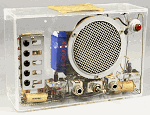 "This simple gadget showed off the magic
of the first transistor. In 1949 an engineer at Bell Labs built three music boxes
to show off the new transistors. Each
Transistor Oscillator-Amplifier
Box contained an oscillator-amplifier circuit and two point-contact transistors
powered by a B-type battery. It electronically produced five distinct tones, although
the sounds were not exactly melodious delights to the ear. The box's design was
a simple LC circuit, consisting of a capacitor and an inductor. The capacitance
was selectable using the switch bank, which Bardeen 'played' when he demonstrated
the box. Bell Labs used one of the boxes to demonstrate the transistor's portability.
In early demonstrations, the instantaneous response of the circuits wowed witnesses,
who were accustomed to having to wait for vacuum tubes to warm up. The other two
music boxes went to Bardeen and Brattain. Only Bardeen's survives..." "This simple gadget showed off the magic
of the first transistor. In 1949 an engineer at Bell Labs built three music boxes
to show off the new transistors. Each
Transistor Oscillator-Amplifier
Box contained an oscillator-amplifier circuit and two point-contact transistors
powered by a B-type battery. It electronically produced five distinct tones, although
the sounds were not exactly melodious delights to the ear. The box's design was
a simple LC circuit, consisting of a capacitor and an inductor. The capacitance
was selectable using the switch bank, which Bardeen 'played' when he demonstrated
the box. Bell Labs used one of the boxes to demonstrate the transistor's portability.
In early demonstrations, the instantaneous response of the circuits wowed witnesses,
who were accustomed to having to wait for vacuum tubes to warm up. The other two
music boxes went to Bardeen and Brattain. Only Bardeen's survives..."
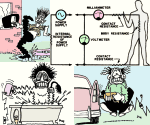 Victims of
electrical shock have been around as long as experiments in electricity and
electrical appliances have been around. For that matter, even ancient men unfortunate
enough to have come into contact with an electric eel or a lightning bolt, or even
those who rubbed against sheep's wool in an arid environment and then reached for
a metal implement, know the pain of an electrical shock... or worse. This article
in the August 1959 edition of Popular Electronics warns readers of the
dangers lurking at the end of every electrical cord. One of the cartoons shows a
guy being zapped while using an electric drill. About a year after graduating from
high school, a friend of mine was using a power saw in a garage that had a damp,
dirt floor. Even as late as the mid 1970s there were still a lot of power tools
that had metal bodies, and usually had no ground wire. Electrocutions were not uncommon.
My friend died from his contact with 120 VAC... Victims of
electrical shock have been around as long as experiments in electricity and
electrical appliances have been around. For that matter, even ancient men unfortunate
enough to have come into contact with an electric eel or a lightning bolt, or even
those who rubbed against sheep's wool in an arid environment and then reached for
a metal implement, know the pain of an electrical shock... or worse. This article
in the August 1959 edition of Popular Electronics warns readers of the
dangers lurking at the end of every electrical cord. One of the cartoons shows a
guy being zapped while using an electric drill. About a year after graduating from
high school, a friend of mine was using a power saw in a garage that had a damp,
dirt floor. Even as late as the mid 1970s there were still a lot of power tools
that had metal bodies, and usually had no ground wire. Electrocutions were not uncommon.
My friend died from his contact with 120 VAC...
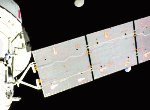 Do you have any idea what the curved lines
and other patterns visible on the Orion Artemis moon probe are? I cannot find any
information on them. NASA assembly photos show only a bluish regular matrix of solar
cells with no hint of these patterns. They look like digital oscilloscope displays
resembling various waveforms and text blocks. I've never seen anything like it.
Are they circuit elements showing through from behind the PV cells? Maybe this is
a way of communicating with the space aliens who monitor Earth activity and live
among us ;-) Do you have any idea what the curved lines
and other patterns visible on the Orion Artemis moon probe are? I cannot find any
information on them. NASA assembly photos show only a bluish regular matrix of solar
cells with no hint of these patterns. They look like digital oscilloscope displays
resembling various waveforms and text blocks. I've never seen anything like it.
Are they circuit elements showing through from behind the PV cells? Maybe this is
a way of communicating with the space aliens who monitor Earth activity and live
among us ;-)
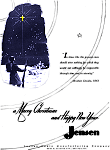 Seeing an advertisement like this from a
national corporation - especially one that did work for the government - in a major
magazine would be rare these days. In 1945 when this Christmas advertisement was
proffered by
Jensen Radio Manufacturing Company in Radio News magazine, it was meant
as an inoffensive message of thanks and goodwill to all people, and particularly
to servicemen. Today, some would like to prosecute the purveyor for the crime of
"hate speech," which is basically anything suggesting America's founding was fundamentally
righteous and just. "Merry Christmas to all, and to all a good night!" Seeing an advertisement like this from a
national corporation - especially one that did work for the government - in a major
magazine would be rare these days. In 1945 when this Christmas advertisement was
proffered by
Jensen Radio Manufacturing Company in Radio News magazine, it was meant
as an inoffensive message of thanks and goodwill to all people, and particularly
to servicemen. Today, some would like to prosecute the purveyor for the crime of
"hate speech," which is basically anything suggesting America's founding was fundamentally
righteous and just. "Merry Christmas to all, and to all a good night!"
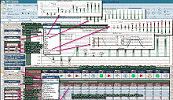 RF Cascade Workbook is the next phase in the evolution of
RF Cafe's long-running series, RF Cascade Workbook. Chances are you have
never used a spreadsheet quite like this (click here for screen capture). It is a full-featured RF system
cascade parameter and frequency planner that includes filters and mixers for a mere
$45. Built in MS Excel, using RF Cascade Workbook 2018 is a cinch
and the format is entirely customizable. It is significantly easier and faster than
using a multi-thousand dollar simulator when a high level system analysis is all
that is needed. An intro video takes you through the main features...
RF Cascade Workbook is the next phase in the evolution of
RF Cafe's long-running series, RF Cascade Workbook. Chances are you have
never used a spreadsheet quite like this (click here for screen capture). It is a full-featured RF system
cascade parameter and frequency planner that includes filters and mixers for a mere
$45. Built in MS Excel, using RF Cascade Workbook 2018 is a cinch
and the format is entirely customizable. It is significantly easier and faster than
using a multi-thousand dollar simulator when a high level system analysis is all
that is needed. An intro video takes you through the main features...
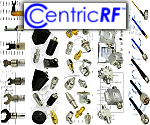 Centric RF is a company offering from stock
various RF and
Microwave coaxial components, including attenuators, adapters, cable assemblies,
terminations, power dividers, and more. We believe in offering high performance
parts from stock at a reasonable cost. Frequency ranges of 0-110 GHz at power
levels from 0.5-500 watts are available off the shelf. Order today, ship today!
Centric RF is currently looking for vendors to partner with them. Please visit Centric
RF today. Centric RF is a company offering from stock
various RF and
Microwave coaxial components, including attenuators, adapters, cable assemblies,
terminations, power dividers, and more. We believe in offering high performance
parts from stock at a reasonable cost. Frequency ranges of 0-110 GHz at power
levels from 0.5-500 watts are available off the shelf. Order today, ship today!
Centric RF is currently looking for vendors to partner with them. Please visit Centric
RF today.
Monday the 5th
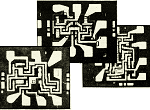 According to the Bureau of Labor Statistics,
inflation has increased the cost of goods by a factor of 9.4x since 1965 when this
article appeared in Electronics World magazine. Although the number does not apply
directly to semiconductors, the products made with them generally follow the trend.
If you apply 9.4x to the prices here, the cost of a
Fairchild uA914 dual, two-input NOR gate would have risen from 99¢ to about
$9.31, which is highly unreasonable. The article does mention the rapidly lowering
cost of semiconductors. Figure 2 projects the average price of integrated circuits
to decrease from $20 to $1 between 1963 and 1970, whereupon the curve flattens.
Of course that was based on a knowledge and limitations of existing technology.
A dual, two-input NOR gate will cost you 54¢ today from DigiKey (only 13¢ in quantities
of 25,000). The single-copy price works out to about 6% of the inflation-adjusted
1965 price... According to the Bureau of Labor Statistics,
inflation has increased the cost of goods by a factor of 9.4x since 1965 when this
article appeared in Electronics World magazine. Although the number does not apply
directly to semiconductors, the products made with them generally follow the trend.
If you apply 9.4x to the prices here, the cost of a
Fairchild uA914 dual, two-input NOR gate would have risen from 99¢ to about
$9.31, which is highly unreasonable. The article does mention the rapidly lowering
cost of semiconductors. Figure 2 projects the average price of integrated circuits
to decrease from $20 to $1 between 1963 and 1970, whereupon the curve flattens.
Of course that was based on a knowledge and limitations of existing technology.
A dual, two-input NOR gate will cost you 54¢ today from DigiKey (only 13¢ in quantities
of 25,000). The single-copy price works out to about 6% of the inflation-adjusted
1965 price...
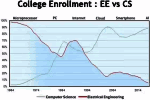 "Electronics
and electrical engineering job outlooks are on the decline due to interests
and global materials shortages, but that could change based on several dynamics.
The pandemic has done its best to hinder chip production on a global scale. But
while the shortage shows signs of subsiding, semiconductor companies are encountering
another problem that could set them back: a lack of qualified electronics and electrical
engineers. In June of this year (2022), Intel engineer Raja Koduri attended the
IEEE Symposium on VLSI Technology & Circuits and raised the issue of engineer
scarcity within the U.S., which painted a negative forecast for the near future
(to say the least)..." "Electronics
and electrical engineering job outlooks are on the decline due to interests
and global materials shortages, but that could change based on several dynamics.
The pandemic has done its best to hinder chip production on a global scale. But
while the shortage shows signs of subsiding, semiconductor companies are encountering
another problem that could set them back: a lack of qualified electronics and electrical
engineers. In June of this year (2022), Intel engineer Raja Koduri attended the
IEEE Symposium on VLSI Technology & Circuits and raised the issue of engineer
scarcity within the U.S., which painted a negative forecast for the near future
(to say the least)..."
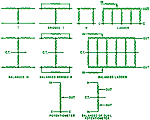 Here is a real cornucopia of attenuator
information from the May 1966 issue of Electronics World magazine. If you
need circuits diagram and
equations for "T," Bridged-T, Ladder, Pi, Balanced-H, Balanced Ladder, Potentiometer,
and Balanced (Dual) Potentiometer type attenuators, then you've come to the
right place. A discussion is included on attenuator selection and specification
for ordering rather than designing and building your own. The distinction between
a "pad" and an "attenuator" has always been vague to me and I, like most people,
use the terms interchangeably. Author Chester Scott seems to believe a "pad" always
has a fixed value whereas an attenuator can be either fixed or variable... Here is a real cornucopia of attenuator
information from the May 1966 issue of Electronics World magazine. If you
need circuits diagram and
equations for "T," Bridged-T, Ladder, Pi, Balanced-H, Balanced Ladder, Potentiometer,
and Balanced (Dual) Potentiometer type attenuators, then you've come to the
right place. A discussion is included on attenuator selection and specification
for ordering rather than designing and building your own. The distinction between
a "pad" and an "attenuator" has always been vague to me and I, like most people,
use the terms interchangeably. Author Chester Scott seems to believe a "pad" always
has a fixed value whereas an attenuator can be either fixed or variable...
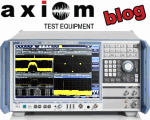 Axiom Test Equipment, an electronic test
equipment rental and sales company has published a new press release entitled "Tracking
Testers for Radars & Communications Systems," that explains how ideal signal
sources for testing communications and radar equipment should combine high performance
with versatility. Communications systems transfer information between locations
while radars search for targets. A quick review of the essential differences between
communications and radar systems can help target the types of test equipment with
the capabilities needed to optimize the performance of each type of electronic system.
The types of signals used in communications and radar systems are as diverse as
the types of systems themselves. Communications systems range from short-range wireless
Bluetooth links, such as between a computer and printer, and more complex 5G wireless
networks with billions of users worldwide. Radars are now used in all markets, from
automotive safety to weather forecasting, with signals covering a wide range of
power levels... Axiom Test Equipment, an electronic test
equipment rental and sales company has published a new press release entitled "Tracking
Testers for Radars & Communications Systems," that explains how ideal signal
sources for testing communications and radar equipment should combine high performance
with versatility. Communications systems transfer information between locations
while radars search for targets. A quick review of the essential differences between
communications and radar systems can help target the types of test equipment with
the capabilities needed to optimize the performance of each type of electronic system.
The types of signals used in communications and radar systems are as diverse as
the types of systems themselves. Communications systems range from short-range wireless
Bluetooth links, such as between a computer and printer, and more complex 5G wireless
networks with billions of users worldwide. Radars are now used in all markets, from
automotive safety to weather forecasting, with signals covering a wide range of
power levels...
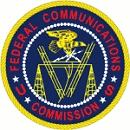 This is a very interesting
article about the
FCC's "Secrecy of Communications" rules. Manmade radio interference (QRM in
Ham lingo), has been a problem since the early days of wireless communications.
You might convincingly argue that it was worse at a time when many transmitters
were of the arc type that basically spewed out a mess of RF energy within a specified
bandwidth (very wide compared to today) to signal the presence of a "dit" (a digital
"1"), with the absence of a signal being a "dah" (digital "0"). Filter technology
for both the transmit and receive sides was also poor, allowing unintentional RF
noise to be sent over the air and to find its way into the detector circuits. The
Federal Communications Commission (FCC), first formed in 1934, nearly four decades
after Guglielmo Marconi first demonstrated his wireless set in 1896. Sometime around
1952, the FCC allocated a half dozen frequencies in the 27 MHz for radio control
(R/C) model use, mixed within the existing citizens band (CB) radio channels. As
you might imagine, interference problems were rampant, especially near metro areas
and highways with heavy truck traffic. This editorial in a 1969 issue of American
Aircraft Modeler magazine reports on just how bad things had gotten, especially
that caused by operators using faulty and/or illegally modified transmitters, and
even by malicious intentional attempts to "shoot down" model airplanes by keying
transmitters in the vicinity of flight activity. In 1965, the FCC allocated... This is a very interesting
article about the
FCC's "Secrecy of Communications" rules. Manmade radio interference (QRM in
Ham lingo), has been a problem since the early days of wireless communications.
You might convincingly argue that it was worse at a time when many transmitters
were of the arc type that basically spewed out a mess of RF energy within a specified
bandwidth (very wide compared to today) to signal the presence of a "dit" (a digital
"1"), with the absence of a signal being a "dah" (digital "0"). Filter technology
for both the transmit and receive sides was also poor, allowing unintentional RF
noise to be sent over the air and to find its way into the detector circuits. The
Federal Communications Commission (FCC), first formed in 1934, nearly four decades
after Guglielmo Marconi first demonstrated his wireless set in 1896. Sometime around
1952, the FCC allocated a half dozen frequencies in the 27 MHz for radio control
(R/C) model use, mixed within the existing citizens band (CB) radio channels. As
you might imagine, interference problems were rampant, especially near metro areas
and highways with heavy truck traffic. This editorial in a 1969 issue of American
Aircraft Modeler magazine reports on just how bad things had gotten, especially
that caused by operators using faulty and/or illegally modified transmitters, and
even by malicious intentional attempts to "shoot down" model airplanes by keying
transmitters in the vicinity of flight activity. In 1965, the FCC allocated...
 RF Cascade Workbook is the next phase in the evolution of
RF Cafe's long-running series, RF Cascade Workbook. Chances are you have
never used a spreadsheet quite like this (click here for screen capture). It is a full-featured RF system
cascade parameter and frequency planner that includes filters and mixers for a mere
$45. Built in MS Excel, using RF Cascade Workbook 2018 is a cinch
and the format is entirely customizable. It is significantly easier and faster than
using a multi-thousand dollar simulator when a high level system analysis is all
that is needed. An intro video takes you through the main features...
RF Cascade Workbook is the next phase in the evolution of
RF Cafe's long-running series, RF Cascade Workbook. Chances are you have
never used a spreadsheet quite like this (click here for screen capture). It is a full-featured RF system
cascade parameter and frequency planner that includes filters and mixers for a mere
$45. Built in MS Excel, using RF Cascade Workbook 2018 is a cinch
and the format is entirely customizable. It is significantly easier and faster than
using a multi-thousand dollar simulator when a high level system analysis is all
that is needed. An intro video takes you through the main features...
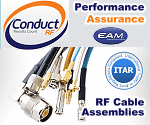 ConductRF is continually innovating and
developing new and improved solutions for RF Interconnect needs. See the latest
TESTeCON RF Test
Cables for labs. ConductRF makes production and test coax cable assemblies for
amplitude and phased matched VNA applications as well as standard & precision
RF connectors. Over 1,000 solutions for low PIM in-building to choose from in the
iBwave component library. They also provide custom coax solutions for applications
where some standard just won't do. A partnership with Newark assures fast, reliable
access. Please visit ConductRF today to see how they can help your project! ConductRF is continually innovating and
developing new and improved solutions for RF Interconnect needs. See the latest
TESTeCON RF Test
Cables for labs. ConductRF makes production and test coax cable assemblies for
amplitude and phased matched VNA applications as well as standard & precision
RF connectors. Over 1,000 solutions for low PIM in-building to choose from in the
iBwave component library. They also provide custom coax solutions for applications
where some standard just won't do. A partnership with Newark assures fast, reliable
access. Please visit ConductRF today to see how they can help your project!
Sunday the 4th
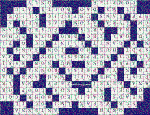 Here is your custom made
Electronics Themed crossword puzzle for December 4th, 2022. The four newly minted
numerical prefixes are included and are indicated with an asterisk. The prefixes
were declared in 2022 by the General Conference on Weights and Measures in Versailles,
France. All RF Cafe crossword puzzles are custom made by me, Kirt Blattenberger,
and have only words and clues related to electronics, electricity, radio, radar,
RF, microwave, and mm-wave engineering, optics, mathematics, chemistry, physics,
and other technical subjects. As always, this crossword contains no names of politicians,
mountain ranges, exotic foods or plants, movie stars, or anything of the sort unless
it/he/she is related to this puzzle's technology theme... Here is your custom made
Electronics Themed crossword puzzle for December 4th, 2022. The four newly minted
numerical prefixes are included and are indicated with an asterisk. The prefixes
were declared in 2022 by the General Conference on Weights and Measures in Versailles,
France. All RF Cafe crossword puzzles are custom made by me, Kirt Blattenberger,
and have only words and clues related to electronics, electricity, radio, radar,
RF, microwave, and mm-wave engineering, optics, mathematics, chemistry, physics,
and other technical subjects. As always, this crossword contains no names of politicians,
mountain ranges, exotic foods or plants, movie stars, or anything of the sort unless
it/he/she is related to this puzzle's technology theme...
Friday the 2nd
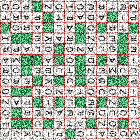 Unlike many of the crossword puzzles found
in many magazines, the majority of the words and clues in this 1965 Electronics
World "Electronic
Crosswords" puzzle pertain to electronics, physics, mathematics, and other technical
topics. Only a couple pertain to items not used in modern electronics assemblies,
but you probably know what they are, anyway. I took the liberty of inserting alternate
clues for the non-technical words, thus effectively rendering the entire crossword
puzzle as totally compliant as my weekly RF Cafe Crossword Puzzles. You're welcome. Unlike many of the crossword puzzles found
in many magazines, the majority of the words and clues in this 1965 Electronics
World "Electronic
Crosswords" puzzle pertain to electronics, physics, mathematics, and other technical
topics. Only a couple pertain to items not used in modern electronics assemblies,
but you probably know what they are, anyway. I took the liberty of inserting alternate
clues for the non-technical words, thus effectively rendering the entire crossword
puzzle as totally compliant as my weekly RF Cafe Crossword Puzzles. You're welcome.
 Founded in 2004,
LadyBug Technologies has quickly built a reputation as one of the world's premier
(they would argue "the" world's premier) manufacturers of RF and microwave power
measurement test equipment. Their line of fast, accurate and NIST-traceable power
sensors cover the 9 kHz to 50 GHz frequency range with 86 dB of dynamic range.
In the process, LadyBug engineers have produced many very helpful instructional
and educational videos for the benefit of their customers who use the power sensors,
but also for anyone interested in making precision power measurements. A few of
the videos are presented below, including titles such as "Peak and Pulse Power Demonstration,"
"Making Autonomous Unattended RF Power Measurements," and "75 Ohm RF Power Measurements."
and you can access the entire collection on LadyBug Technologies' YouTube channel... Founded in 2004,
LadyBug Technologies has quickly built a reputation as one of the world's premier
(they would argue "the" world's premier) manufacturers of RF and microwave power
measurement test equipment. Their line of fast, accurate and NIST-traceable power
sensors cover the 9 kHz to 50 GHz frequency range with 86 dB of dynamic range.
In the process, LadyBug engineers have produced many very helpful instructional
and educational videos for the benefit of their customers who use the power sensors,
but also for anyone interested in making precision power measurements. A few of
the videos are presented below, including titles such as "Peak and Pulse Power Demonstration,"
"Making Autonomous Unattended RF Power Measurements," and "75 Ohm RF Power Measurements."
and you can access the entire collection on LadyBug Technologies' YouTube channel...
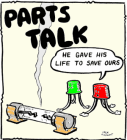 Preparing for a
technician career in electronics today is not so different than it was in 1970,
when this article on resume preparation appeared in Popular Electronics
magazine. Sure, particular job descriptions have changed, but the basics are pretty
much the same. In 1970, being able to list television and radio repair on your resume
was a valuable indication of your schematic reading and troubleshooting prowess.
The keywords Sams Photofacts would jump right off the page at a knowledgeable interviewer
(you can still buy documentation packages from Sams Technical Publishing). Then,
as now, having a two-year college electronics degree or a stint in the armed forces
as an electronics technician - or both, preferably - is almost a requirement for
landing a job at a defense or aerospace electronics company... Preparing for a
technician career in electronics today is not so different than it was in 1970,
when this article on resume preparation appeared in Popular Electronics
magazine. Sure, particular job descriptions have changed, but the basics are pretty
much the same. In 1970, being able to list television and radio repair on your resume
was a valuable indication of your schematic reading and troubleshooting prowess.
The keywords Sams Photofacts would jump right off the page at a knowledgeable interviewer
(you can still buy documentation packages from Sams Technical Publishing). Then,
as now, having a two-year college electronics degree or a stint in the armed forces
as an electronics technician - or both, preferably - is almost a requirement for
landing a job at a defense or aerospace electronics company...
 "Seventy-five years is a long time. It's
so long that most of us don't remember a time before the transistor, and long enough
for many engineers to have devoted entire careers to its use and development. In
honor of this most important of technological achievements, this issue's package
of articles explores the transistor's historical journey and potential future. In
'The First Transistor and How it Worked,' Glenn Zorpette dives deep into how the
point-contact transistor came to be. Then, in 'The Ultimate Transistor Timeline,'
Stephen Cass lays out the device's evolution, from the flurry of successors to the
point-contact transistor to the complex devices in today's laboratories that might
one day go commercial. The transistor would never have become so useful and so ubiquitous
if the semiconductor industry had not succeeded in making it small and cheap..." "Seventy-five years is a long time. It's
so long that most of us don't remember a time before the transistor, and long enough
for many engineers to have devoted entire careers to its use and development. In
honor of this most important of technological achievements, this issue's package
of articles explores the transistor's historical journey and potential future. In
'The First Transistor and How it Worked,' Glenn Zorpette dives deep into how the
point-contact transistor came to be. Then, in 'The Ultimate Transistor Timeline,'
Stephen Cass lays out the device's evolution, from the flurry of successors to the
point-contact transistor to the complex devices in today's laboratories that might
one day go commercial. The transistor would never have become so useful and so ubiquitous
if the semiconductor industry had not succeeded in making it small and cheap..."
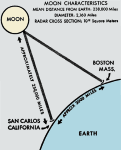 We recently passed the 62nd anniversary
of the first successful
earth-moon-earth (EME) communication path by amateur radio operators. What is
today a routine operation by Hams was a big deal back in the day. The moon was still
a mystery to most of the world since at the time not even an unmanned probe had
been sent for exploration. As reported in this 1960 issue of Electronics World magazine,
1,296 MHz was the frequency of choice using a 1 kW klystron on the transmit
end and a highly sensitive parametric amplifier on the receive end, with high gain
parabolic antennas on both ends. The Federal Communications Commission (FCC) has
allocated the 144.00-144.20 MHz, 222.0-222.025 MHz, 432.00-432.07 MHz,
902.8-903.0 MHz, 1295.8-1296.05 MHz, and 2303.9-2304.2 MHz bands
for various modes of EME operation per Part 97 rules... We recently passed the 62nd anniversary
of the first successful
earth-moon-earth (EME) communication path by amateur radio operators. What is
today a routine operation by Hams was a big deal back in the day. The moon was still
a mystery to most of the world since at the time not even an unmanned probe had
been sent for exploration. As reported in this 1960 issue of Electronics World magazine,
1,296 MHz was the frequency of choice using a 1 kW klystron on the transmit
end and a highly sensitive parametric amplifier on the receive end, with high gain
parabolic antennas on both ends. The Federal Communications Commission (FCC) has
allocated the 144.00-144.20 MHz, 222.0-222.025 MHz, 432.00-432.07 MHz,
902.8-903.0 MHz, 1295.8-1296.05 MHz, and 2303.9-2304.2 MHz bands
for various modes of EME operation per Part 97 rules...
 With more than 1000
custom-built symbols, this has got to be the most comprehensive set of
Visio Symbols available for RF, analog, and digital system and schematic
drawings! Every object has been built to fit proportionally on the provided
A-, B- and C-size drawing page templates (or can use your own). Symbols are provided
for equipment racks and test equipment, system block diagrams, conceptual drawings,
and schematics. Unlike previous versions, these are NOT Stencils, but instead are
all contained on tabbed pages within a single Visio document. That puts everything
in front of you in its full glory. Just copy and paste what you need on your drawing.
The file format is XML so everything plays nicely with Visio 2013 and later... With more than 1000
custom-built symbols, this has got to be the most comprehensive set of
Visio Symbols available for RF, analog, and digital system and schematic
drawings! Every object has been built to fit proportionally on the provided
A-, B- and C-size drawing page templates (or can use your own). Symbols are provided
for equipment racks and test equipment, system block diagrams, conceptual drawings,
and schematics. Unlike previous versions, these are NOT Stencils, but instead are
all contained on tabbed pages within a single Visio document. That puts everything
in front of you in its full glory. Just copy and paste what you need on your drawing.
The file format is XML so everything plays nicely with Visio 2013 and later...
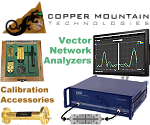 Copper Mountain Technologies develops innovative
and robust RF test and measurement solutions for engineers all over the world. Copper
Mountain's extensive line of unique form factor
Vector
Network Analyzers include an RF measurement module and a software application
which runs on any Windows PC, laptop or tablet, connecting to the measurement hardware
via USB interface. The result is a lower cost, faster, more effective test process
that fits into the modern workspace in lab, production, field and secure testing
environments. 50 Ω and 75 Ω models are available, along with
a full line of precision calibration and connector adaptors. Copper Mountain Technologies develops innovative
and robust RF test and measurement solutions for engineers all over the world. Copper
Mountain's extensive line of unique form factor
Vector
Network Analyzers include an RF measurement module and a software application
which runs on any Windows PC, laptop or tablet, connecting to the measurement hardware
via USB interface. The result is a lower cost, faster, more effective test process
that fits into the modern workspace in lab, production, field and secure testing
environments. 50 Ω and 75 Ω models are available, along with
a full line of precision calibration and connector adaptors.
Thursday the 1st
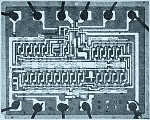 My first exposure to
bare die integrated circuits was in the early 1980's, while working at the Westinghouse
Oceanic Division in Annapolis, Maryland. It was my first job as an electronics technician
after separating from the U.S. Air Force. After working there on the evening shift
for a couple years building sonar systems for the U.S. Navy, I had an opportunity
to move to the day shift if I could pass muster for a high level security clearance.
A small group of engineers, with just one technician, was formed to serve the needs
of a "special" customer. A couple other guys with more seniority them me interviewed
for the position, but they failed the background check, which included two polygraph
tests ...but I digress. Part of my job entailed building microcircuit assemblies
using bare IC die and surface mount passive devices epoxied to very tiny printed
circuit substrates, and then using a thermosonic wirebond machine to do the interconnections.
1 mil gold wire was used. A week-long class at the company's plant in Baltimore
provided the basics, but the work we did was very unique and required developing
new techniques that probably would not pass inspection by the crotchety Navy inspectors... My first exposure to
bare die integrated circuits was in the early 1980's, while working at the Westinghouse
Oceanic Division in Annapolis, Maryland. It was my first job as an electronics technician
after separating from the U.S. Air Force. After working there on the evening shift
for a couple years building sonar systems for the U.S. Navy, I had an opportunity
to move to the day shift if I could pass muster for a high level security clearance.
A small group of engineers, with just one technician, was formed to serve the needs
of a "special" customer. A couple other guys with more seniority them me interviewed
for the position, but they failed the background check, which included two polygraph
tests ...but I digress. Part of my job entailed building microcircuit assemblies
using bare IC die and surface mount passive devices epoxied to very tiny printed
circuit substrates, and then using a thermosonic wirebond machine to do the interconnections.
1 mil gold wire was used. A week-long class at the company's plant in Baltimore
provided the basics, but the work we did was very unique and required developing
new techniques that probably would not pass inspection by the crotchety Navy inspectors...
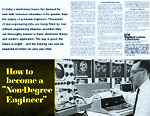 Call me a snob, but IMHO except for rare
circumstances, if you expect to hold the title of "engineer," you really should
have
earned a college degree in engineering. Sure, there are talented people without
an engineering degree that can do certain engineering jobs more competently than
someone with an engineering degree; however, it certainly is not so in the majority
of instances. It is foolish to look around at all the technology you share your
life with and conclude that people without the benefit of a formal engineering education
could turn out so much at such a fast pace. When someone learns that you are an
engineer, there is an automatic assumption that you hold at least a Bachelor's degree
in engineering, software, or the physical sciences. If you tell someone you are
a technician, the assumption is that you have earned an Associate's degree and/or
received training in the military specific to your job's nature. When I see messages
like the one in this advertisement, I get a little perturbed because: 1) It is misleading
since unaware people will believe that becoming an engineer really is a easy as
taking some home instruction courses, and 2) It diminishes the accomplishments,
financial and time investment, and hard work of those who did earn an engineering
degree... Call me a snob, but IMHO except for rare
circumstances, if you expect to hold the title of "engineer," you really should
have
earned a college degree in engineering. Sure, there are talented people without
an engineering degree that can do certain engineering jobs more competently than
someone with an engineering degree; however, it certainly is not so in the majority
of instances. It is foolish to look around at all the technology you share your
life with and conclude that people without the benefit of a formal engineering education
could turn out so much at such a fast pace. When someone learns that you are an
engineer, there is an automatic assumption that you hold at least a Bachelor's degree
in engineering, software, or the physical sciences. If you tell someone you are
a technician, the assumption is that you have earned an Associate's degree and/or
received training in the military specific to your job's nature. When I see messages
like the one in this advertisement, I get a little perturbed because: 1) It is misleading
since unaware people will believe that becoming an engineer really is a easy as
taking some home instruction courses, and 2) It diminishes the accomplishments,
financial and time investment, and hard work of those who did earn an engineering
degree...
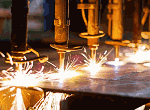 There is an article on the EETimes website
entitled, "Solder's
Days Should Be Numbered - There Is a Better Way." It basically an infomercial
for the Occam Group's process of "reverse order processing" which eliminates soldering
of electronics assemblies. "Our vision is to first attach components to a 'component
board' and test that assembly before encapsulation and circuitization. This ensures
that all assemblies are known to be good at the outset. There are several methods
for adding component connections, including traditional plating techniques and additive
printed circuits. By removing solder, thermal excursions are greatly diminished."
It sounds good, but upon visiting Occam's website
I could not find any useful information about how they work their claimed magic,
and no photos of actual products or processes. The idea sounds good, but might still
be in the vaporware phase of development. Please correct me if I'm wrong. There is an article on the EETimes website
entitled, "Solder's
Days Should Be Numbered - There Is a Better Way." It basically an infomercial
for the Occam Group's process of "reverse order processing" which eliminates soldering
of electronics assemblies. "Our vision is to first attach components to a 'component
board' and test that assembly before encapsulation and circuitization. This ensures
that all assemblies are known to be good at the outset. There are several methods
for adding component connections, including traditional plating techniques and additive
printed circuits. By removing solder, thermal excursions are greatly diminished."
It sounds good, but upon visiting Occam's website
I could not find any useful information about how they work their claimed magic,
and no photos of actual products or processes. The idea sounds good, but might still
be in the vaporware phase of development. Please correct me if I'm wrong.
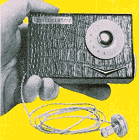 If this 1960 Popular Electronics
magazine article was written today, the title would more likely be, "One
IC Pocket Radio," and rather than a couple dozen resistors, capacitors, and
inductors (and a transformer), and there might be one or two decoupling capacitors.
Everything else would be contained within the integrated circuit. There are plenty
of single-chip radio circuits available from distributors like Digi-Key, Newark
Electronics, etc. Oh, and how many of you even know what a phenolic board looks
like? Better yet, how many of you can identify the unique smell of one heating up
or burning due to component overheating? If you can't, then consider yourself lucky,
because that probably means you're 40-50 years younger than I am, and you have that
much longer to live then me... If this 1960 Popular Electronics
magazine article was written today, the title would more likely be, "One
IC Pocket Radio," and rather than a couple dozen resistors, capacitors, and
inductors (and a transformer), and there might be one or two decoupling capacitors.
Everything else would be contained within the integrated circuit. There are plenty
of single-chip radio circuits available from distributors like Digi-Key, Newark
Electronics, etc. Oh, and how many of you even know what a phenolic board looks
like? Better yet, how many of you can identify the unique smell of one heating up
or burning due to component overheating? If you can't, then consider yourself lucky,
because that probably means you're 40-50 years younger than I am, and you have that
much longer to live then me...
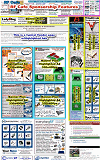 New Scheme rotates
all Banners in all locations on the page! RF Cafe typically receives 8,000-15,000
website visits each weekday.
RF Cafe is a favorite
of engineers, technicians, hobbyists, and students all over the world. With more
than 12,000 pages in the Google search index, RF Cafe returns in favorable
positions on many types of key searches, both for text and images. New content is
added on a daily basis, which keeps the major search engines interested enough to
spider it multiple times each day. Items added on the homepage often can be found
in a Google search within a few hours of being posted. I also re-broadcast homepage
items on LinkedIn. If you need your company news to be seen, RF Cafe is the
place to be. New Scheme rotates
all Banners in all locations on the page! RF Cafe typically receives 8,000-15,000
website visits each weekday.
RF Cafe is a favorite
of engineers, technicians, hobbyists, and students all over the world. With more
than 12,000 pages in the Google search index, RF Cafe returns in favorable
positions on many types of key searches, both for text and images. New content is
added on a daily basis, which keeps the major search engines interested enough to
spider it multiple times each day. Items added on the homepage often can be found
in a Google search within a few hours of being posted. I also re-broadcast homepage
items on LinkedIn. If you need your company news to be seen, RF Cafe is the
place to be.
 Triad RF Systems designs and manufactures
RF power amplifiers
and systems. Triad RF Systems comprises three partners (hence "Triad") with
over 40 years of accumulated knowledge of what is required to design, manufacture,
market, sell and service RF/Microwave amplifiers and amplifier systems. PA, LNA,
bi-directional, and frequency translating amplifiers are available, in formats including
tower mount, benchtop, rack mount, and chassis mount. "We view Triad more as a technology
partner than a vendor for our line-of-sight communications product line." Please
check to see how they can help your project. Triad RF Systems designs and manufactures
RF power amplifiers
and systems. Triad RF Systems comprises three partners (hence "Triad") with
over 40 years of accumulated knowledge of what is required to design, manufacture,
market, sell and service RF/Microwave amplifiers and amplifier systems. PA, LNA,
bi-directional, and frequency translating amplifiers are available, in formats including
tower mount, benchtop, rack mount, and chassis mount. "We view Triad more as a technology
partner than a vendor for our line-of-sight communications product line." Please
check to see how they can help your project.
These archive pages are provided in order to make it easier for you to find items
that you remember seeing on the RF Cafe homepage. Of course probably the easiest
way to find anything on the website is to use the "Search
RF Cafe" box at the top of every page.
About RF Cafe.
Homepage Archive Pages
2024:
Jan |
Feb |
Mar |
Apr |
May |
Jun |
Jul |
Aug |
Sep |
Oct |
Nov |
Dec
2023:
Jan |
Feb |
Mar |
Apr |
May |
Jun |
Jul |
Aug |
Sep |
Oct |
Nov |
Dec
2022:
Jan |
Feb |
Mar |
Apr |
May |
Jun |
Jul |
Aug |
Sep |
Oct |
Nov |
Dec
2021:
Jan |
Feb |
Mar |
Apr |
May |
Jun |
Jul |
Aug |
Sep |
Oct |
Nov |
Dec
2020:
Jan |
Feb |
Mar |
Apr |
May |
Jun |
Jul |
Aug |
Sep |
Oct |
Nov |
Dec
2019:
Jan |
Feb |
Mar |
Apr |
May |
Jun |
Jul |
Aug |
Sep |
Oct |
Nov |
Dec
2018:
Jan |
Feb |
Mar |
Apr |
May |
Jun |
Jul |
Aug |
Sep |
Oct |
Nov |
Dec
2017:
Jan |
Feb |
Mar |
Apr |
May |
Jun |
Jul |
Aug |
Sep |
Oct |
Nov |
Dec
2016:
Jan |
Feb |
Mar |
Apr |
May |
Jun |
Jul |
Aug |
Sep |
Oct |
Nov |
Dec
2015:
Jan |
Feb |
Mar |
Apr |
May |
Jun |
Jul |
Aug |
Sep |
Oct |
Nov |
Dec
2014:
Jan |
Feb |
Mar |
Apr |
May |
Jun |
Jul |
Aug |
Sep |
Oct |
Nov |
Dec
2013:
Jan |
Feb |
Mar |
Apr |
May |
Jun |
Jul |
Aug |
Sep |
Oct |
Nov |
Dec
2012:
1 |
2 |
3 |
4 |
5 |
6 |
7 |
8 |
9 |
10 |
11 |
12 |
13 (no archives before 2012)
|


































 Copper Mountain Technologies
Copper Mountain Technologies





